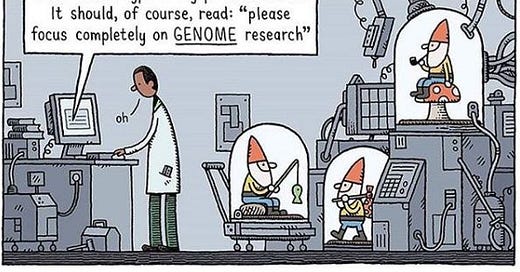The Art of the Brief: Turning Great Questions into Great Results
How to create concise, structured, and effective briefs that transform consultancy, market research, branding, and strategic projects.
Introduction: Why the Brief is Your Most Important Tool
Professionals in consultancy, market research, branding, and strategy know that a strong brief is not just important—it's foundational. Yet, the art of creating effective briefs remains one of the most overlooked and misunderstood aspects of client-provider relationships.
An effective brief sets clear expectations, prevents misunderstandings, and aligns both parties toward a common goal. Without it, even the most talented teams can produce misaligned, unfocused, and inefficient work. We’ve all experienced it: the wasted hours, muddled results, and unmet expectations. Often, these frustrations stem from a weak brief rather than poor execution.
In this edition of Code Uncovered, we dive deep into the anatomy of effective briefs. We'll share insights, best practices, and real-life examples, enabling you to craft better briefs and set clearer expectations. We will also provide a practical template framework to instantly elevate your brief-building process.
🔎 Why Briefs Matter: Understanding the Hidden Costs
A brief is not merely paperwork—it's the map that guides your entire project. A poorly constructed brief leads to inefficiencies, unnecessary revisions, and escalating costs.
Common pitfalls include:
💡 Ambiguity
Vague language or undefined objectives lead to guesswork.
⏳ Scope Creep
Without clear boundaries, the project expands beyond initial expectations.
📉 Diluted Results
Insights that are too broad or too shallow fail to drive meaningful decisions.
Yet clients often overlook brief development, expecting robust insights from minimal guidance. The reality is starkly different: the quality of the brief directly shapes the quality of outcomes.
🧩 Elements of a Strong, SMART Brief
A strong brief adheres to the SMART framework—Specific, Measurable, Achievable, Relevant, and Time-bound:
🎯 Specific: Define clear and concise goals. What exactly do you want to achieve?
📐 Measurable: How will you track progress and success?
✔️ Achievable: Are the goals realistic, given time and budget constraints?
🔗 Relevant: Does every request directly serve the project’s overarching objective?
📅 Time-bound: What deadlines must be met, and what milestones will guide your progress?
Implementing the SMART criteria ensures clarity and actionable outcomes, benefiting both clients and providers.
Keep reading with a 7-day free trial
Subscribe to Code Uncovered to keep reading this post and get 7 days of free access to the full post archives.




